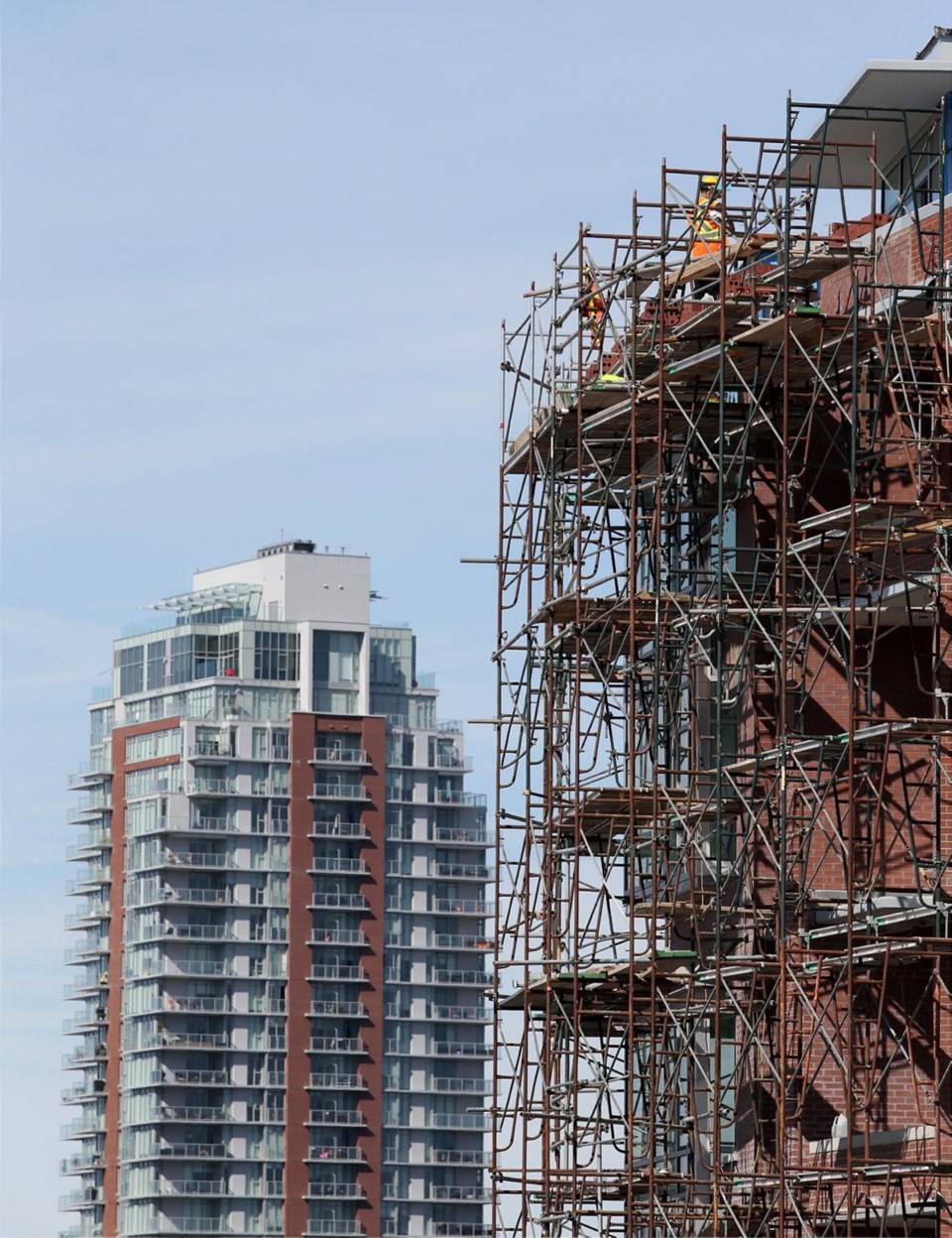Low housing inventory in the region did more than just drive up values for single-family homeowners. It also resulted in double-digit percentage increases in assessed property values for many condo and townhouse owners, according to figures released this week by B.C. Assessment.
The provincial body said condos and townhomes have increased in assessed value by between five and 30 per cent in the region.
Two of the three most expensive condos are in Songhees, with a suite at the top of Bosa Properties’ Promontory — 2101 83 Saghalie Rd. — coming in at $6.86 million, up from $5.91 million last year. The second-most-valuable condo jumped more than $1 million in value. It is in the Shoal Point development at 921 21 Dallas Rd. and is now assessed at $5.27 million, up from $4.23 million a year ago. Third on the list is at unit in Bayview One — 1006 100 Saghalie Rd. — at Songhees, which is assessed at $4.86 million, up from $4.12 million.
It was just a matter of time the condo market felt the kind of value surge the single-family home market has been seeing over the past year, said outgoing Victoria Real Estate Board president Mike Nugent.
He said pressure on the single-family home market, which has driven assessed home values up as much as 40 per cent, is starting to hit multi-family buildings.
“The pressure this year turned to condos. We had a lot of condo inventory built up through the 2008-2013 financial crisis, and in the first half of 2016 that inventory was getting sold down, and because there was selection there was not as much pressure on price,” he said.
Nugent said by mid-year that excess inventory was gone, which continues to push up the values of condos. Despite plenty of building in the city, there remains plenty of demand and little inventory, so there’s a good chance values will continue to rise.
Nugent noted at the end of 2015 there were 500 condo listings on the multiple listings service, and at the end of 2016 that number was just 186.
The residential housing market also had an effect on commercial properties, though not to the same extent. B.C. Assessment said commercial properties saw an increase in value between five and 15 per cent in the past year.
Nine of the top-10 commercial properties are shopping malls, with Uptown leading the way at an assessed value of nearly $370million, up from $310 million last year.
Randy Holt, partner at Newmark Knight Frank Devencore Victoria, said the reason commercial properties lag behind residential in value increases is the two markets have different drivers.
“It was an extraordinary year for residential real estate,” he said. “I’ve been in Victoria 37 years and I’ve never seen price movement like there was last spring and summer.”
Holt said that was driven by low inventory, little new supply and high demand. He said there was some bleeding of the residential market’s heat into the commercial market as development sites were snapped up.
“The value of developable land downtown has probably gone up by 50 per cent in some cases,” he said, adding with demand for condos and still little supply there’s no sign of that slowing down.
Holt said as far as office and commercial space is concerned, because buildings usually have tenants in five-year leases, there’s little turnover and few sales.
Anne Tanner, managing director with Cushman & Wakefield, said emotion also plays a role in the difference between the two markets. “Houses are bought and sold and emotion is involved, whereas commercial buildings are typically owned for strictly investment’s sake,” she said. “Commercial buildings are primarily valued on the net operating income of the building, the location of the building and the age of the building systems.”
But there could be more significant increases in value coming in the next few years.
“We may see an uptick in commercial and industrial values and maybe some reduction in vacancy over the next couple of years in response to ultra-tight market conditions and soaring values in Vancouver,” said Holt.



